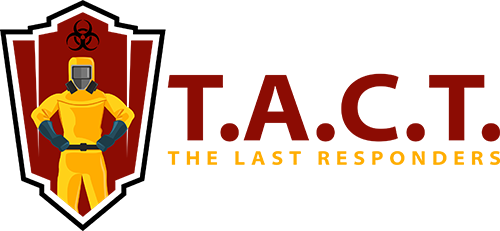How to Properly Clean Up Blood: A 10-Step Guide
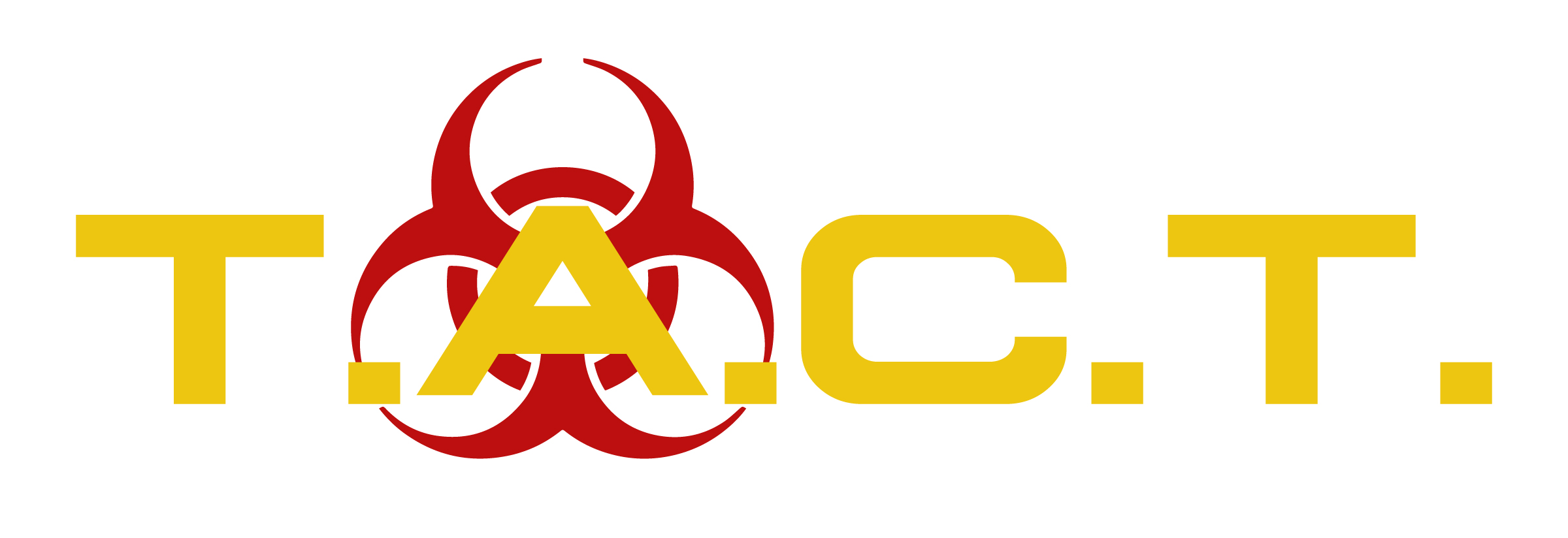

The Importance of Proper Blood Cleanup
Accidents are inevitable, and while we can’t always prevent them, knowing how to handle unexpected situations is essential. Blood spills, in particular, should be taken seriously, as they pose significant health risks due to the potential presence of harmful pathogens. Cleaning up blood requires precision and caution to avoid exposure to diseases such as HIV, Hepatitis B and C, and MRSA.
If you’re unsure about how to safely clean up a blood spill, follow our 10-step procedure to ensure you take the right actions.
Ten Step Procedure for Blood Spill Cleanup
1. The Cleaning Equipment
Before beginning the cleanup, focus on protection. Always wear gloves and eye protection. Even if they seem unnecessary, they are crucial. Taking a few minutes to ensure you're properly protected can help save your life.
2. Eliminate Potential Dangers
Regardless of whether you're dealing with sharp glass or another hazard, it’s essential to clear the area of all potential dangers before starting the cleanup. Never handle broken glass or sharp objects directly; always use a brush and dustpan to remove them safely.
3. First Round of Cleaning
Start by covering the spill with towels and allow them to absorb as much blood as possible. For quicker absorption, place a heavy object on top of the towels. Avoid using your hands to press down; instead, use a safe weight.
4. Second Round of Cleaning
After the towels have soaked up the majority of the blood, it’s time to disinfect. Apply a disinfectant solution to the affected area and let it sit for at least 10 minutes (longer for larger spills). Once the time has passed, scrub the area using a clean towel, starting from the outside and working your way toward the center. Once done, dispose of the towels by placing them in a biohazard bag.
5. Third Round of Cleaning
After the initial scrubbing, let the area sit for 10-15 minutes. Then, wipe it down again with damp towels to remove any leftover residue or disinfectant. Dispose of these towels in the biohazard bag as well.
6. Dispose of Your Equipment
After completing the scrubbing and cleaning process, carefully dispose of any protective equipment you used. Place gloves, cleaning towels, and other contaminated materials into a plastic bag and label it as biohazard. Be sure no other areas are contaminated during this process.
7. Decontaminate the Area
Even if you're confident nothing has been contaminated, it’s still essential to decontaminate the area to ensure safety. Decontaminate reusable equipment, like dustpans, buckets, and brooms, by using a quality disinfectant. Let the equipment soak for at least 10 minutes and then rinse with fresh water.
8. Mandatory Procedure Checks
Once the cleanup procedure is complete, check yourself, your clothing, and the surrounding furniture for any signs of contamination. If you notice any blood, especially on your skin, immediately wash it off with disinfectant and take a shower. It’s recommended to have someone assist you with this step to help identify any remaining contaminated areas.
9. Wash Your Hands Thoroughly
While taking a shower is essential, it’s equally important to wash your hands thoroughly using disinfectant soap and warm water. For added protection, use wet wipes after washing your hands.
10. Dispose of the Toxic Waste Properly
Once you've cleaned up and disinfected yourself, properly dispose of all contaminated materials. Do not attempt to wash or reuse towels, gloves, or any other contaminated items. Place everything in labeled biohazard bags to ensure safe disposal.
Consider Hiring Professional Help
If the blood spill is large or involves contamination of a more serious nature, it may be best to hire a professional biohazard cleanup team. Hiring experts ensures the situation is handled with the utmost care and safety.
At T.A.C.T. DC Metro, our experienced team specializes in biohazard and crime scene cleanup. If you find yourself in need of professional assistance, don’t hesitate to contact us. We’re here to help.
Latest news
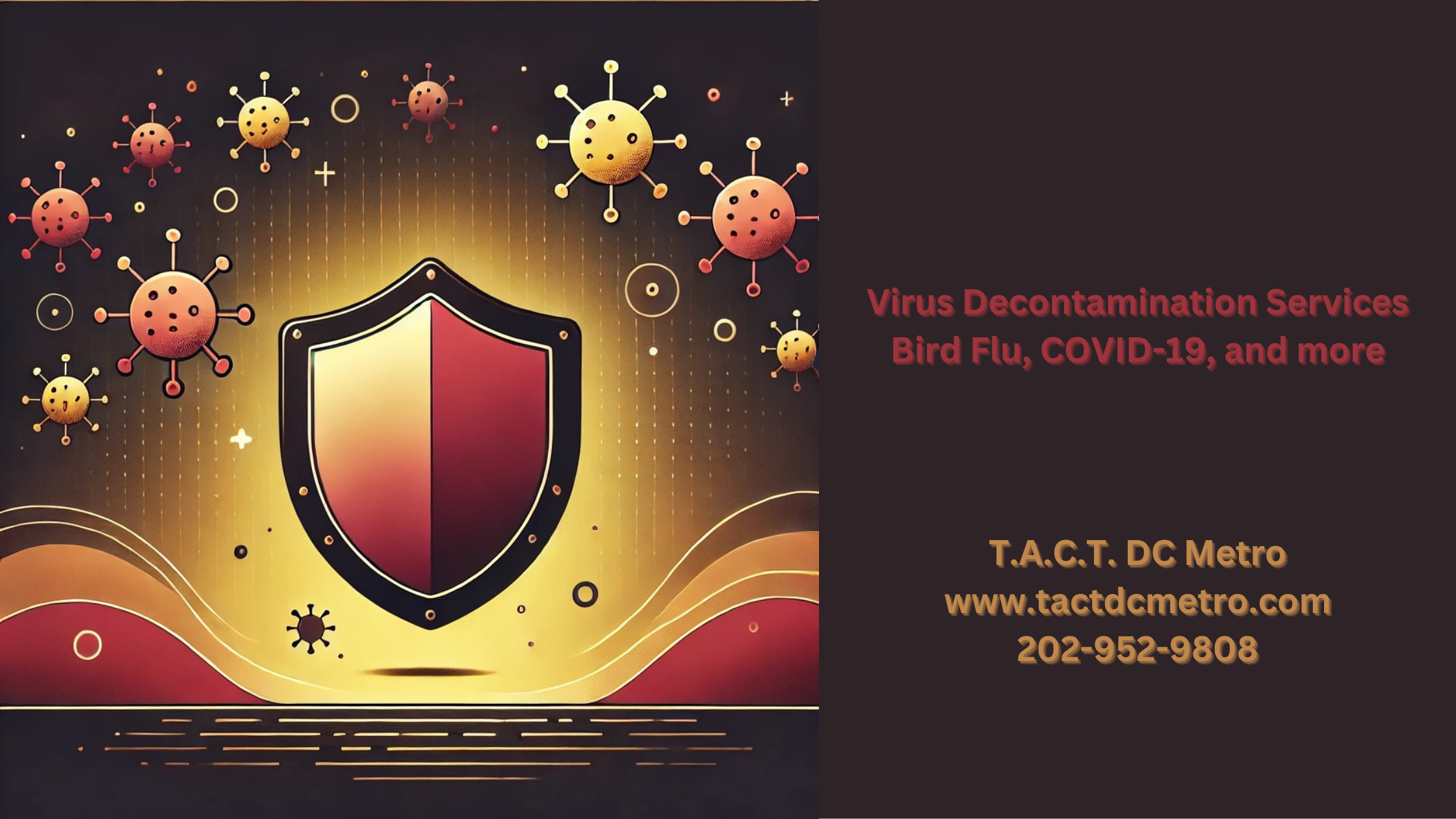
Understand the dangers posed by TB and the pivotal role of T.A.C.T.'s professional cleaning services in managing this biohazard effectively.
Read More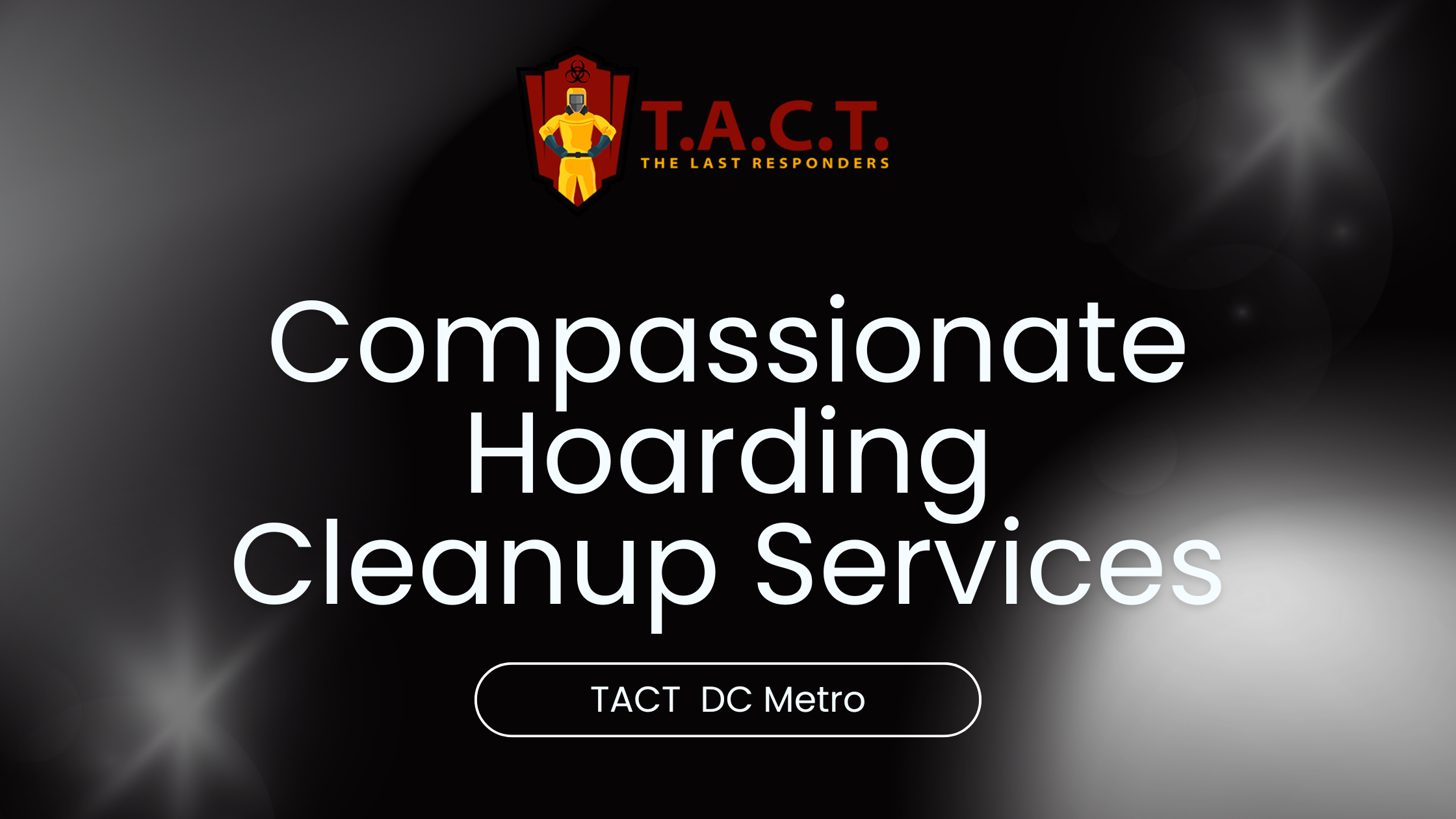
Tackling hoarding cleanup on your own can be difficult, costly and potentially dangerous. Learn about the different levels of hoarding and who to call for help.
Read More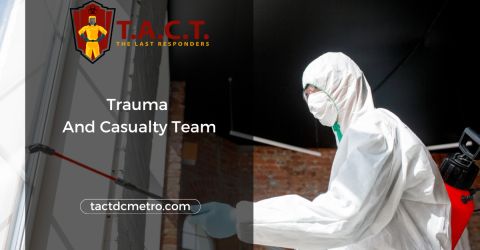
Recent changes to Virginia's mold remediation regulations have created stringent new requirements for both homeowners and contractors in Northern Virginia. According to House Bill 1884, which went into effect in July 2023, all mold remediation workers must now hold specific certifications and follow strict protocols.
Read More